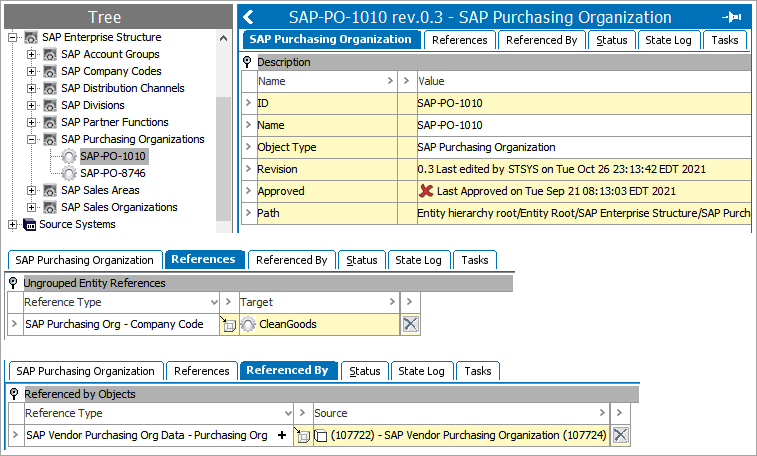The sections below provide an overview of the Customer MDM implementation of SAP data structures.
For additional information, refer to the following topics:
-
SAP R/3 Customer, Supplier, and Enterprise Organizational Data Structures (here) topic includes SAP implementation.
-
SAP R/3 Customer, Supplier, and Enterprise Structure Definitions (here) topic includes the general relationships, constraints, and terms used.
SAP Customer
The SAP Customer is the direct customer of the CPG company. For example, BlueBox Retailer is a customer of CleanGoods Manufacturer. The SAP Customer is represented by the Organization Customer entity type in Customer MDM.
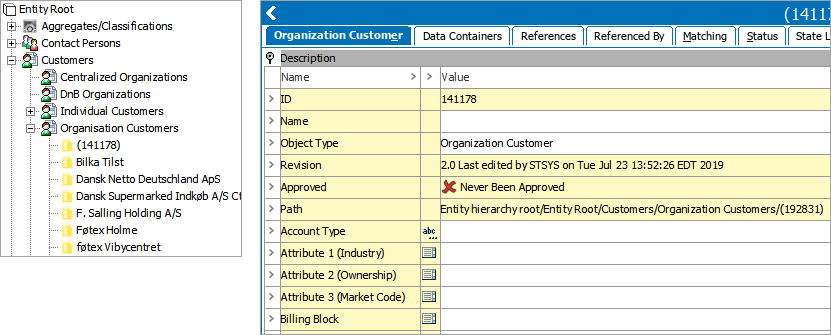
-
Customer Company Code Data and Customer Sales Area Data are data containers on the Organization Customer entity.

-
Data Container-to-Entity References
For each ‘Customer Company Code Data’ data container, a reference points to the target Company Code entity, such as 'SAP Company Code Data' in the image above.
For each ‘Customer Sales Area Data’ data container, a reference points to the target Sales Area entity, such as '-SAP Sales Customer Sales Area Data' in the image above.

For each ‘Customer Sales Area Data’ data container, Partner Function references point to an Organization Customer record. Conversely, each Organization Customer record may be referenced by a ‘Customer Sales Area Data’ data container.
Additionally, on the Organization Customer object, SAP Customer Account Group reference points to an Account Group entity.
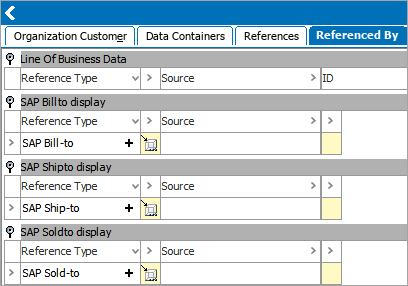
SAP Supplier
The SAP Supplier is the supplier of the CPG company and is represented by the Supplier entity type in Supplier MDM.
Important: Since this topic uses SAP terms, being familiar with this terminology will help you to better understand SAP data structures.
-
Supplier Company Code Data and Supplier Purchasing Organization Data - data containers on the Supplier entity.

-
Data Container-to-Entity References
For each 'SAP Vendor Company Code Data' data container, a reference points to the target Company Code entity.

For each ‘Supplier Purchasing Organization Data’ data container, a reference points to the target Purchasing Organization entity.

SAP Enterprise Structure
A JavaScript business condition is used to govern the Customer Entity data integrity constraints. For more information, refer to the SAP Customer, Supplier, and Enterprise Structure Definitions topic in this documentation here.
The business condition assesses if the Customer Entity is valid for the configured Enterprise Structure. The execution of this business condition should happen in a workflow as part of a transition state and on approval of customer data.
The Customer and Supplier MDM enablement pre-configurations for SAP data structures include the basic SAP data model for object types, attributes, and references.
Account Group
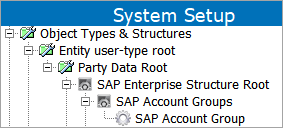
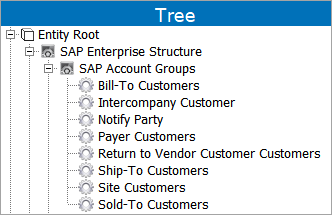
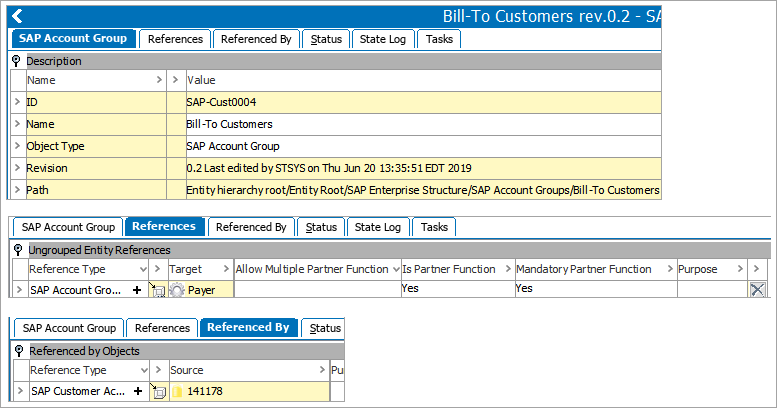
Partner Function
The Customer MDM representations of SAP partner functions are via a dedicated entity type.
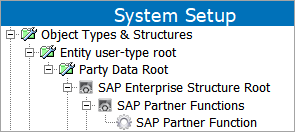
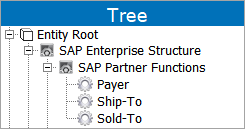
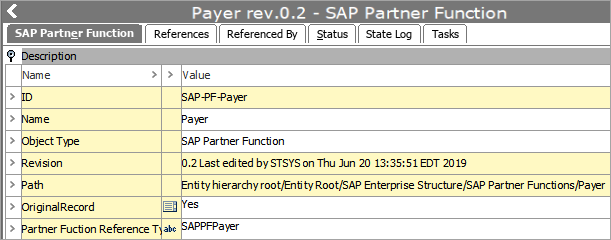
Reference Types
References from ‘Customer Sales Area Data’ data container on Organization Customer entity to other Organization Customer entity or reference to itself.
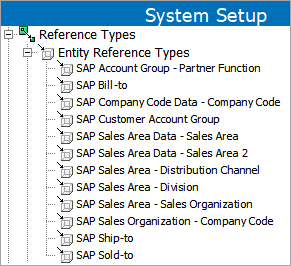
SAP Company Code
As a global company, CleanGoods has separate operating entities determined by geography. Each operating entity is responsible for its own sales and financial reporting, hence the need for separate organization representation as Company Codes.
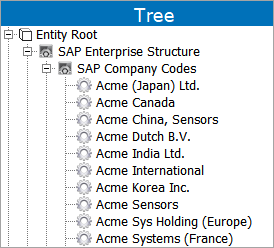
In Customer MDM, Company Code is its own entity type and is a reference from:
- 'Customer Company Code Data' data container via 'SAP Company Code Data – Company Code' reference type.
- 'Sales Organization' entity via 'SAP Sales Organization – Company Code' reference type.
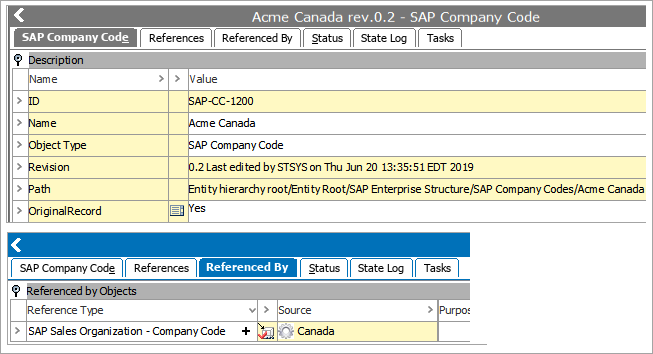
Sales Area
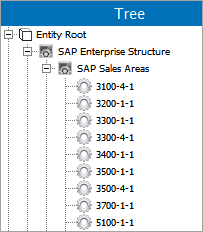
SAP Sales Area Data – Sales Area is a reference from a Sales Area data container.
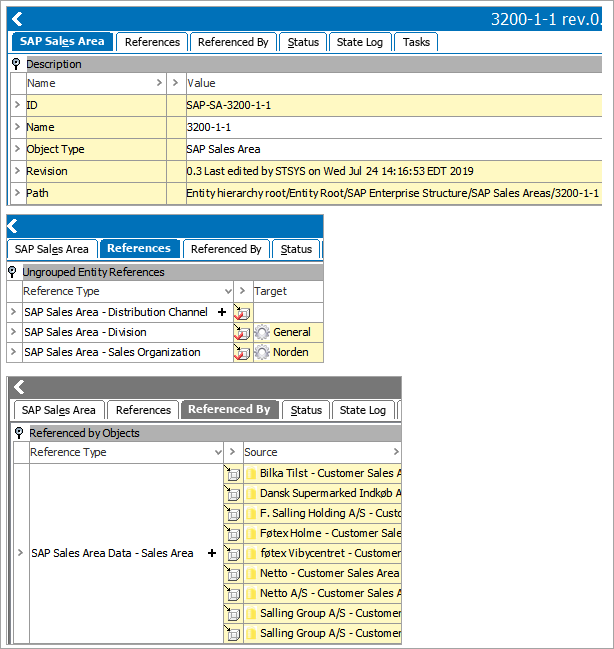
Sales Organization
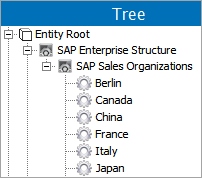
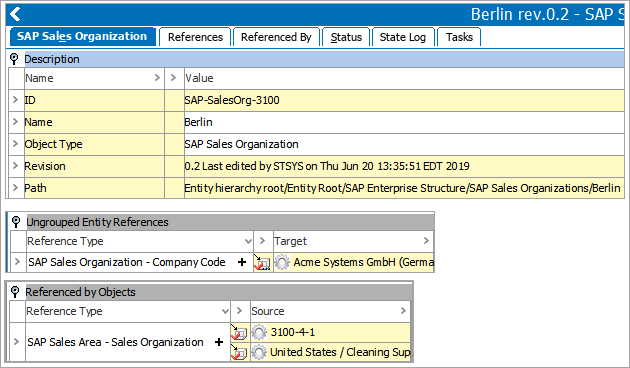
Distribution Channel
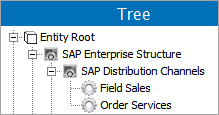
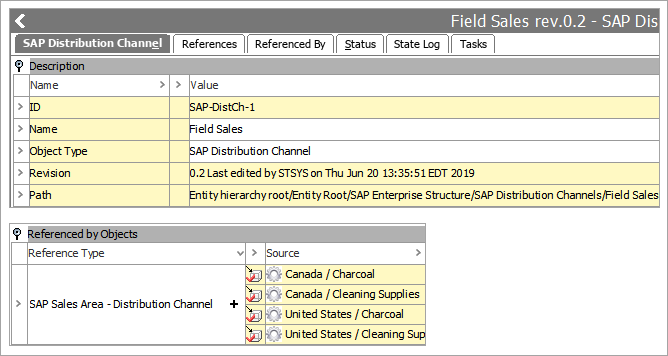
Division

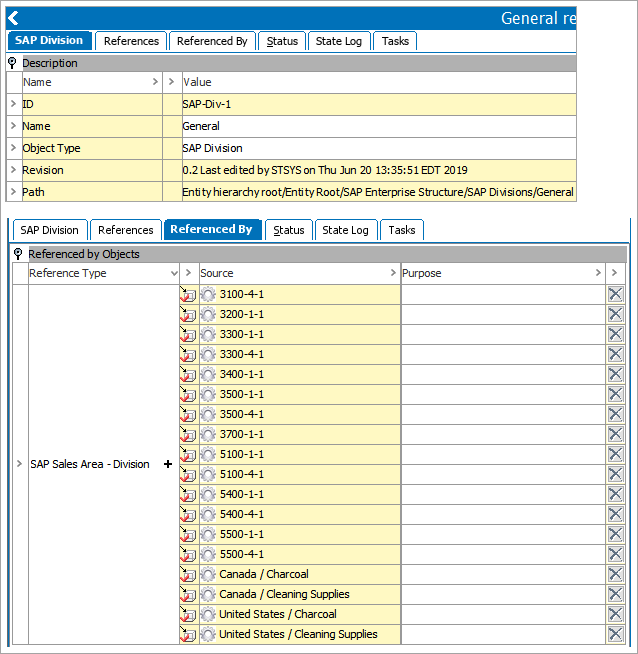
Purchase Organization
